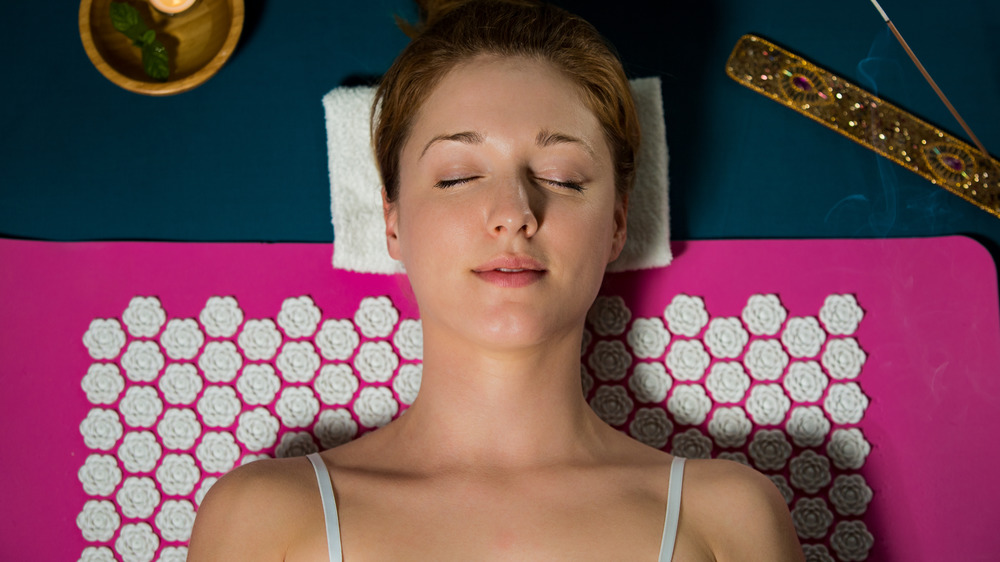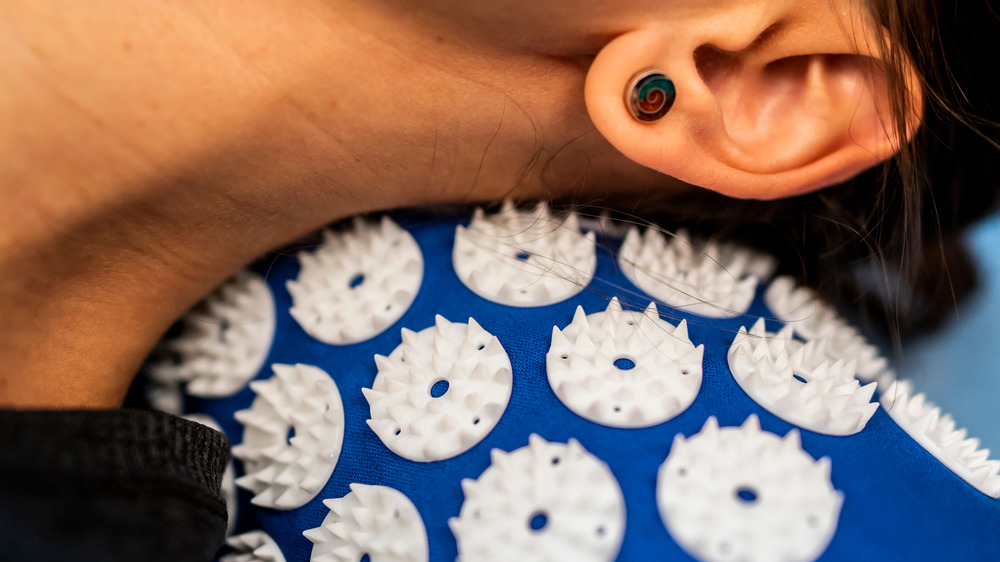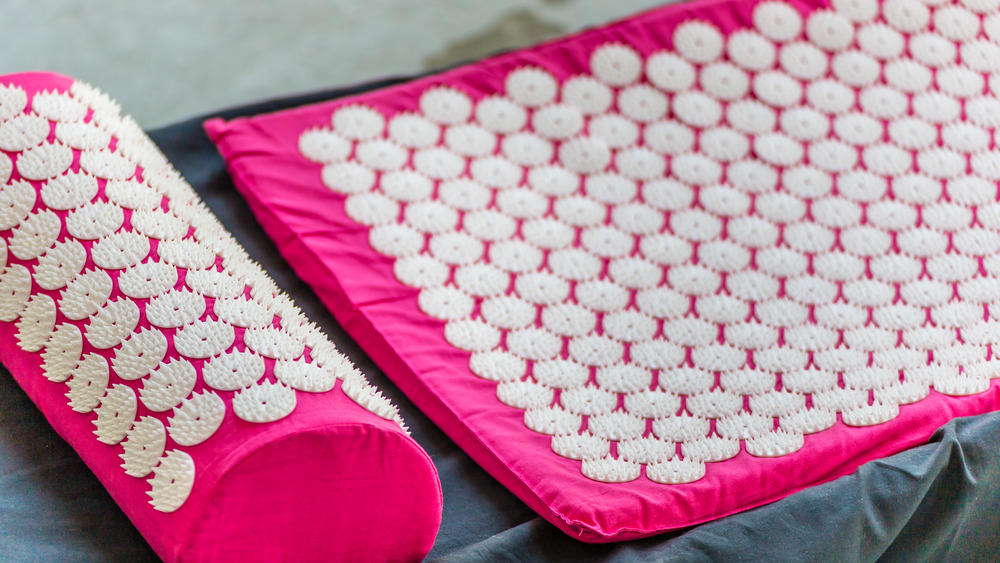Do Acupressure Mats Really Work?
If you've spent any time on social media, chances are you've seen celebrities and influencers post photos sitting with or lying on vibrantly-colored mats, covered in what look like plastic, spiked flowers. Turns out they're not a modern torture device, but rather an alternative medicine staple called acupressure mats.
Acupressure is a technique used in traditional Chinese medicine and is similar to acupuncture, but there are two key differences (via Medical News Today). First, while both techniques stimulate pressure points along the meridians of the body, acupuncture is targeted, while acupressure mats indiscriminately stimulate many pressure points (via Healthline). Oh, and the other huge difference, especially if you have trypanophobia (fear of needles), acupressure mats contain no needles.
Typically, acupressure mats are cloth and are shorter than yoga mats, with the top surface covered in small, plastic spikes. These spikes are not designed to puncture the skin, but rather to apply even pressure throughout. Kat Pither, founder of Yogi Bare, a company who makes acupressure mats, tells Cnet, "Acupressure restores balance to the body's energy flow (qi) by manipulating the body's meridians." She goes on to say this technique helps stimulate "energy, vitality, and a sense of well-being in the body."
Are there proven benefits of acupressure?
Acupressure mats themselves haven't been studied extensively, so there is currently no overwhelming evidence of their benefits — however, since acupressure is closely related to acupuncture, they may provide similar benefits. Keep in mind that most of the reported health benefits of acupressure mats are anecdotal, but they have included relief from headaches, neck and back pain, sciatic pain, muscle tension and stiffness, stress and anxiety, and even insomnia.
A small 2011 study in Iran demonstrated a decrease in menstrual-related pain and ibuprofen use in a group of individuals who used acupressure as part of their therapy (via Iranian Journal of Nursing and Midwifery Research). Similarly, a 2019 review found a moderate level of evidence that acupuncture and/or acupressure was significantly associated with a decrease in pain intensity in patients with cancer (via JAMA).
While more studies are certainly needed to accurately access their effectiveness, there doesn't seem to be much harm in trying it out for yourself.
How to use an acupressure mat
While there is no set standard of use for acupressure mats, here are some tips on how to get started.
Choose your surface wisely. Beginners are encouraged to lay their mat on a sofa or bed, while more experienced users can set their mats up on the floor. The harder the underlying surface, the more pressure you will experience.
Beginners are also encouraged to start by wearing a light shirt, or placing a thin fabric as a barrier between the mat and themselves. Over time, users can work their way up to skin to direct mat contact.
Lie down slowly and reposition thoughtfully. You don't want to slam your body against the mat, because, well, that's going to hurt. It is best to lay your weight down evenly and avoid fidgeting to get comfortable. Moving too quickly on the mat can lead to scratching or tearing of your skin.
Start slow. Don't feel like the first time you lay on the mat you need to spend all day there. It's best to start by practicing laying on the acupressure mat for 10 to 20 minutes a day and slowly working your way up. And of course, the more consistently you practice, the more comfortable you will be with the mat and the more benefits you may experience.
The good news is there are currently tons of acupressure mats and pillows on the market with very little variability among them, so try it out and see if the hype is really worth it.



